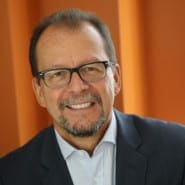“Handicapped workers aren’t necessarily misfits; in fact, they do most jobs better than the average in the three shipyards.”
– The Bos’n’s Whistle, Oregon Shipbuilding Company, April 22, 1943
More than 70 years later, the language (from an article about Kaiser shipyard workers in World War II) has changed, but the sentiment remains the same — people with disabilities are valuable workers. Yet, jobs are difficult to find.
As we celebrate Thanksgiving, I’m thankful for open-minded executives at companies that embrace diversity and the inclusion of people with intellectual and other developmental disabilities (IDD). I’m writing about the employment of people with disabilities now to raise awareness beyond October, which is recognized as National Disability Employment Awareness Month (NDEAM). One month is not sufficient to generate employment opportunities and awareness for this untapped workforce, which is predominantly unemployed or underemployed. We need a year-round effort to focus on creating jobs for people with IDD.
Some companies have compelling reasons for hiring people with disabilities.
‘Not Just the Right Thing to Do, It’s the Smart Thing to Do’
“We are in a new era of disability inclusion. At forward-thinking companies today, disability inclusion is about “assimilation” –– hiring professionals with disabilities into the robust culture of the firm,” says Jim Sinocchi, Managing Director and Head of the Office of Disability Inclusion, JPMorgan Chase & Co. The company’s leadership team, he adds, has the same “will, commitment and attitude to identify, train and groom professionals with disabilities for leadership positions at the firm as we do with mainstream employees. Hiring people with disabilities is not just the right thing to do, it’s the smart thing to do.”
Marlon Alvarado, Director of Talent Acquisition, at JetBlue, recognizes the disability community as the largest pool of untapped talent. “Our goal is to help move the needle forward for people with disabilities,” he said. “Aligned with our mission of inspiring humanity, our business practices focus on innovative hiring and business mentoring programs. Gainful employment speaks directly to humanity, confidence, and self-esteem.”
“Creating an inclusive work environment isn’t just the right thing to do – it’s good business,” adds Mark T. Bertolini, Aetna Chairman and CEO. “Attracting and retaining individuals with disabilities is a priority for Aetna because it enhances the diversity of thought within our organization and increases the empathy we have for our members. We will continue to develop a culture that embraces the different abilities of all of our employees.
‘People Make Companies Extraordinary’
“People make companies extraordinary,” says Michele Meyer-Shipp, KPMG’s Chief Diversity Officer. “So, it’s a clear priority to optimize the unique talents and contributions of a diverse workforce, including people with disabilities. This population often says navigating through a disability forces them to be innovative in their daily lives. In competitive business environments where people need to be more forward-thinking than ever, people with disabilities have the power to bring new perspectives and innovative solutions necessary to deliver the best results to their organizations and clients.”
“We believe that having a diverse and inclusive workforce is fundamental to our company’s success,” adds Nora Vele, Executive Director, Global Diversity & Inclusion, Merck. “Employees with disabilities are uniquely positioned to develop innovative solutions by leveraging well-honed, problem-solving skills they have acquired from having a disability. Not all disabilities are visible, which is why we continually challenge ourselves to ensure we are creating a culture where every employee can bring their whole selves to work so they can thrive. It is the ability in disability that helps drive our organization forward.”
Workers with Autism Enhance Companies
“We find that the unique aptitude for detail-oriented, rigorous work is a huge advantage given our company’s focus on data and artificial intelligence,” says Byran Dai, Founder & CEO, of Daivergent, Inc. “From training the software behind self-driving cars to maintaining accurate inventory for retail customers, our workforce on the autism spectrum is the ideal population. Our company is enhanced by the passion and drive that our workers have for building the data products of the future, which we believe people with disabilities — who have often been underutilized — have incredible potential for.”
Marcelle Ciampi (aka Samantha Craft), ULTRA Testing Job Recruiter and author of Everyday Aspergers, says, “Organizations that put neurodiversity hiring and effective inclusion measures into practice have great potential to positively impact business. Neurodivergent thinkers, such as individuals on the autism spectrum, can offer valued skills, dedication, new innovative approaches, and varied perspectives. .…Without a doubt, a heterogeneous, inclusive workplace can enable an organization to reach its full potential.”
“We believe diversity and inclusion across abilities, ages, backgrounds, and thoughts make a more effective company,” says Juan Otero, VP of Diversity & Inclusion, Comcast. “They help teams create innovative products and services that are designed with accessibility in mind from the outset, further enriching the customer experience.”
Inclusive Workplace
“At Stop & Shop, we believe in hiring dependable, hard-working people of all backgrounds, ethnicities, and abilities,” adds Maria Silvestri, Stop & Shop’s Senior Vice President of Human Resources. “People with disabilities have unique experiences and skills sets that help us work better, be more creative and create a genuine, inclusive workplace.”
Corey Anthony, AT&T’s Senior Vice President, Human Resources and Chief Diversity Officer, says, “Our employees are as diverse as the customers we serve.” Its workforce reflects different races, religions, cultures, sexual orientations, physical abilities, and speaks many languages, he added. “Their various perspectives and experiences power the innovation behind our products and services, which impact our customers’ lives.”
“We believe diversity and inclusion across abilities, ages, backgrounds, and thoughts make a more effective company,” says Juan Otero, VP of Diversity & Inclusion, Comcast. “They help teams create innovative products and services that are designed with accessibility in mind from the outset, further enriching the customer experience.”
“T-Mobile has worked hard to disable the label when it comes to hiring – connecting with people of all abilities who will bring their diverse talents to the Un-carrier and help us develop the next cutting-edge technology,” adds Holli Martinez, VP of Diversity & Inclusion at T-Mobile. “Our goal is to be brand based on listening to our diverse customers, which includes those with both non-visible and physical disabilities, and we work every day to create a culture that is as diverse as our customer base so that we can better serve our customers.”
‘Breaking Employment Barriers’
“Goodwill NYNJ is proud to implement customized job training for individuals with disabilities to help break employment barriers with great employers,” says Katy Gaul-Stigge, Goodwill NYNJ CEO/President. ”We believe that if there are people who want to work and can be ready to work with training support, we will find like-minded employers to connect with,” she says, adding that of 4,000 people placed in jobs last year, 1,300 were people with disabilities.
“Recruiting, hiring, developing, and advancing individuals with different experiences, perspectives and backgrounds is the cornerstone of our growth and innovation business strategies,” adds Eduardo Martinez, UPS Chief Diversity & Inclusion Officer. “UPSers are energized by a workplace where everyone is valued for their unique skills, abilities, and contributions.”
See the Abilities
The evidence is abundant in support of employees with IDD. They’re hard-working, loyal employees. Yet too many people remain in work-readiness programs. Only 35.9 percent of working-age people with disabilities are employed, compared to 76.9 percent of individuals without disabilities, according to the Disabilities Statistics Compendium, published by the Institute on Disability at the University of New Hampshire.
Creating a more inclusive workplace with employees with disabilities also helps the bottom line by reducing turnover and recruiting costs, and increasing productivity. It also changes lives.
More employers need to see the abilities of people with IDD. Hiring people with disabilities is not an act of charity, but rather a sound business decision.
If you would like to bring well-trained people with IDD to your workplace, please contact:
Shauna Lozada
Director of Marketing & Business Development
AHRC New York City
Phone: 347-680-0777
Email: shauna.lozada@ahrcnyc.org

